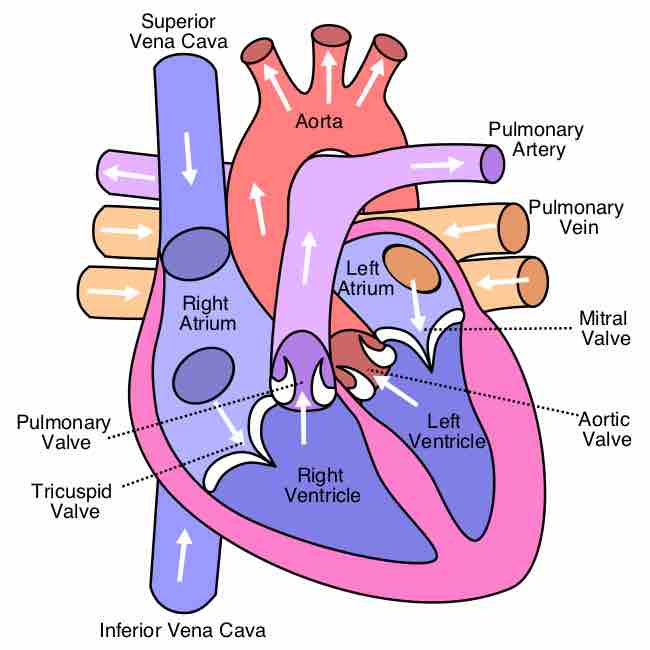Exercise has been shown to protect against nearly every type of chronic acquired cardiovascular disease. A sedentary and inactive lifestyle is associated with greater risk for hypertension, cardiac hypertrophy, atherosclerosis, and myocardial infarctions, due to the metabolic changes that accompany a sedentary lifestyle. The physiological benefits of exercise on the heart include increased blood filling and pumping ability and improved oxygenation.
Athletic Training and Cardiac Function
Aerobic conditioning is a process by which one trains the heart and lungs to pump blood more efficiently, allowing more oxygen to get to muscles, organs, and the heart itself. Aerobic conditioning and cardiovascular fitness are determining factors in athletic performance in events with duration greater than two minutes. In track competitions this includes all events extending from the 800 meter. Training for these events is done predominantly through cardiovascular exercise like running, swimming, and aerobics. A stronger heart does not pump blood faster but does pump it more forcefully with a greater ejection fraction, suggesting more efficient cardiac output. The heart rates at rest of trained endurance athletes are also significantly lower than those of sedentary individuals, because fewer heartbeats are required to produce the same cardiac output at rest in those with higher stroke volumes. The improved pumping capacity of the heart is due to the increased muscular tone of the myocardium, more efficient delivery of blood and oxygen to the heart itself, and improved filling of and ejection from the heart chambers, causing increased stroke volume.
Protection Against Chronic Disease
Exercise, along with a healthy diet, is effective at preventing chronic acquired cardiovascular diseases for several reasons.
- Exercise burns fat and works against adipose tissue creation. Higher levels of fat can cause metabolic syndrome, in which chronic inflammation in the blood vessels increases the risk of atherosclerosis and hypertension.
- Exercise helps prevent blood pooling and clotting, protecting against clots that could cause angina or myocardial infarction.
- Exercise lowers blood pressure by improving the efficiency of the heart's ability to pump blood.
- Exercise releases endorphins that reduce stress. Stress causes sympathetic nervous system activation that increases heart rate and blood sugar, as well as the risk for diabetes and metabolic syndrome.
About thirty minutes per day of cardiovascular exercise is recommended for most non-athletes who wish to maintain a healthy lifestyle. Too much exercise can be detrimental to the heart, but generally only in extreme cases in athletes with certain genetic predispositions. For example, some athletes may be at risk for cardiac hypertrophy from too much exercise over long periods of time and sudden cardiac death from exercising to the point that the heart's metabolic demands become too high, causing an arrhythmia.

The mammalian heart
Chronic exercise results in increased pumping efficiency, a greater filling capacity and greater responsiveness of the heart to increased energy demands.